
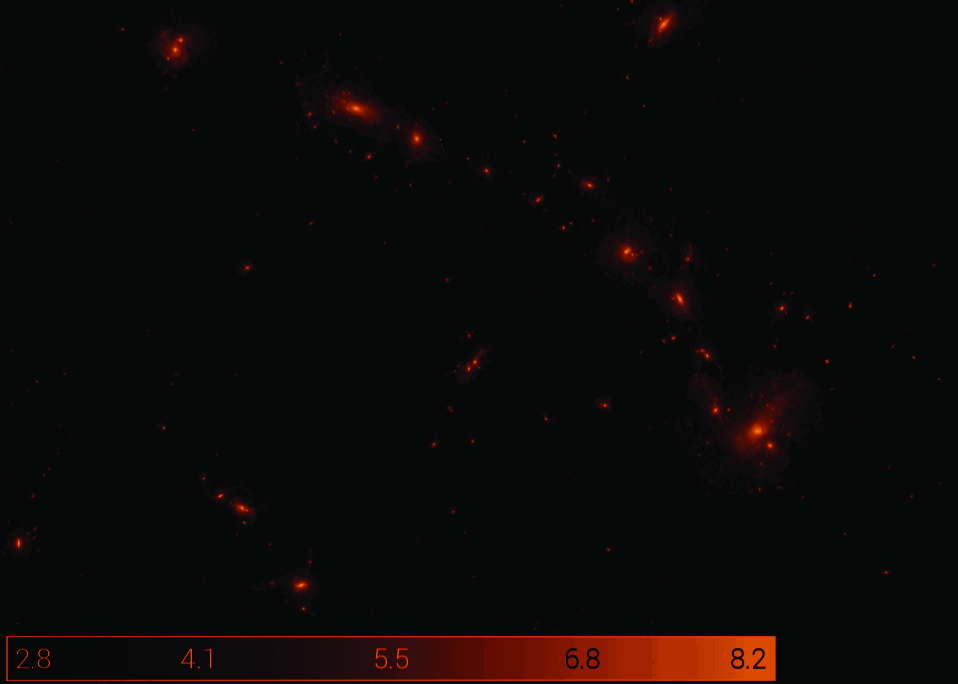
100x70 Mpc projection of the distribution of (left) stellar light and (right) gas temperature in the Illustris-TNG simulation
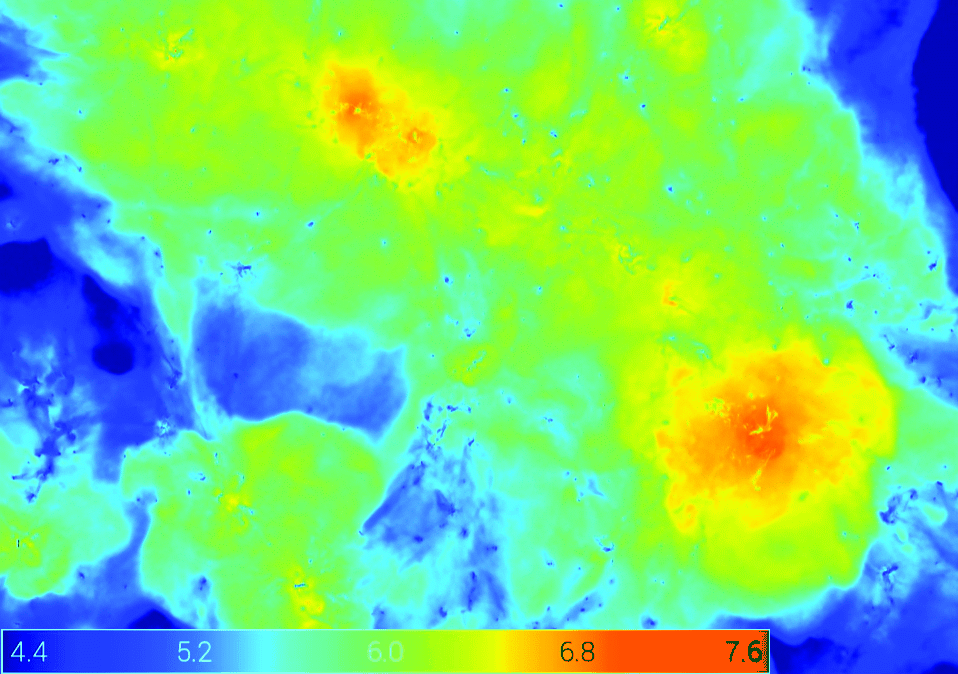
The assembly of baryonic components in cosmic structures is largely driven by violent processes which generate large amounts of energy and metals. Their direct imprint is in the hot phase of the circumgalactic and intergalactic medium, which is currently scarcely observed.
Lynx sensitivity, angular resolution (needed to eliminate background sources), and spectroscopic capabilities will close major gaps in our understanding of galaxy formation and evolution. Essential observations will require high-resolution spectroscopy (R ~ 5000) of background AGNs, the ability to detect low surface brightness continuum emission, and R ~ 2000 spectroscopy of extended sources on arcsecond scales — all capabilities unique to Lynx.
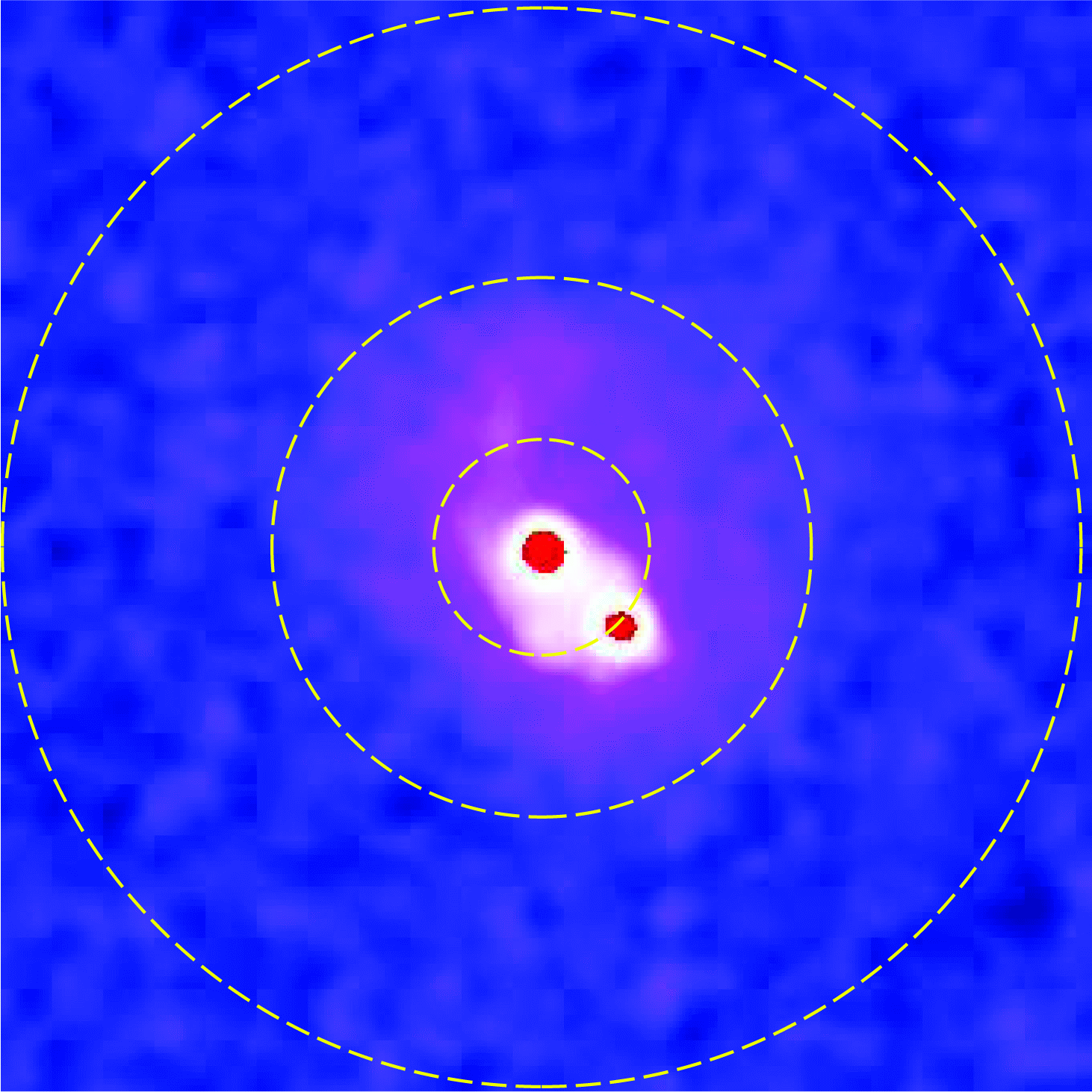
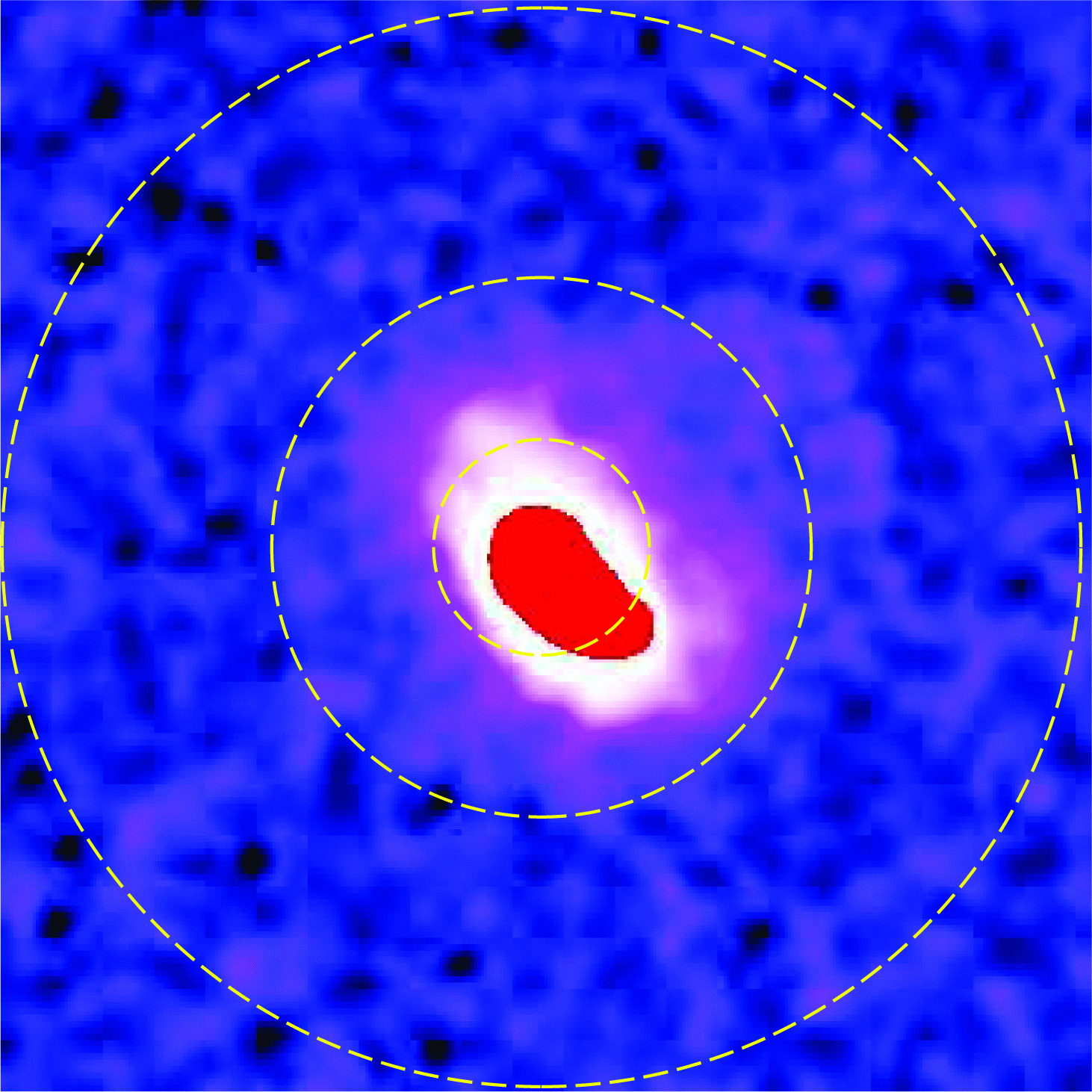
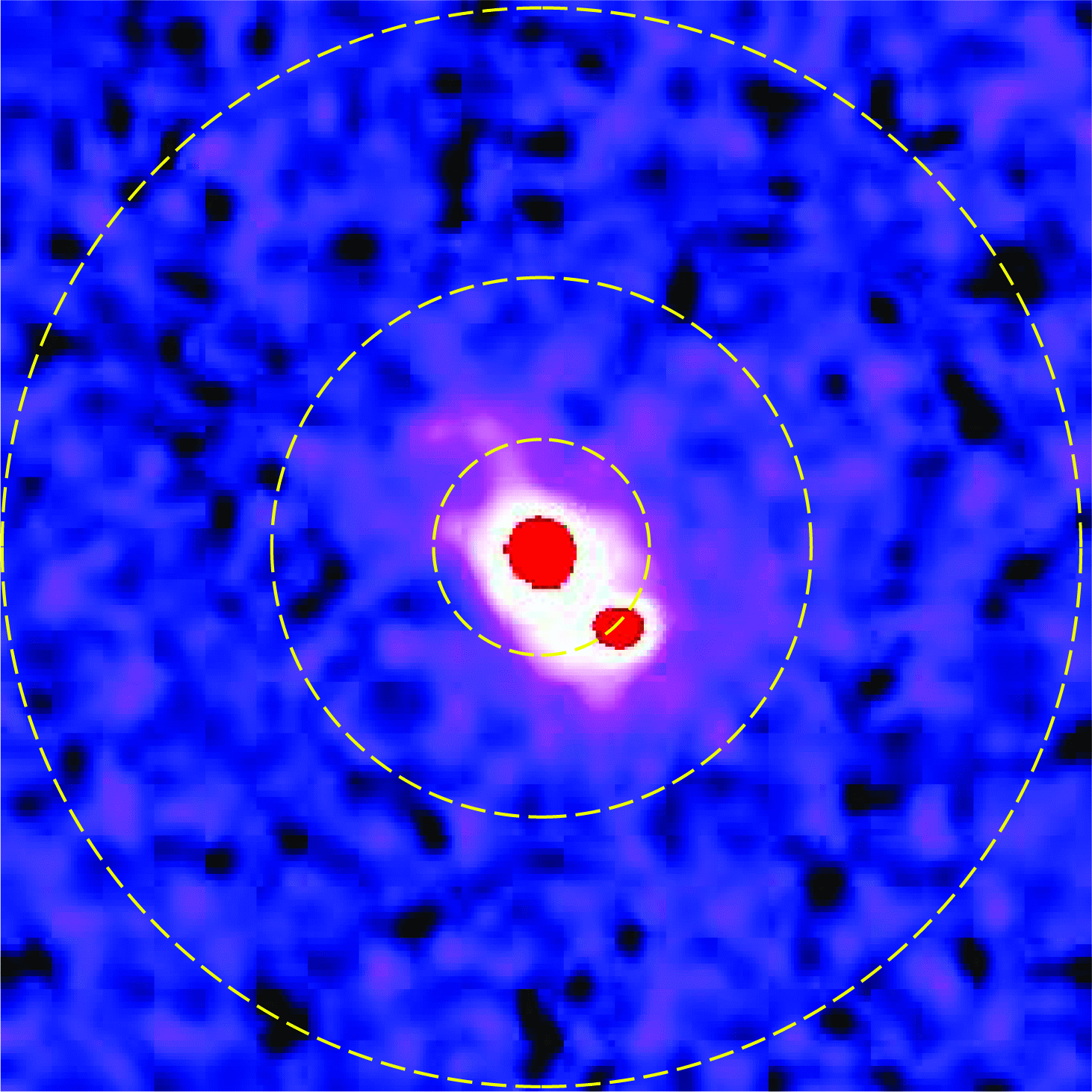
Above: Eagle simulation of a galactic halo in 0.4-0.7 keV (left), 0.7-1.05 keV (middle) and 1.05-1.5 keV (right) soft X-radiation.
Below: OVII (light blue) and OVIII (red) absorption line spectra from bright background AGNs positioned on the dashed circles at radii 0.2, 0.5 and 1.0*r200, left to right respectively.
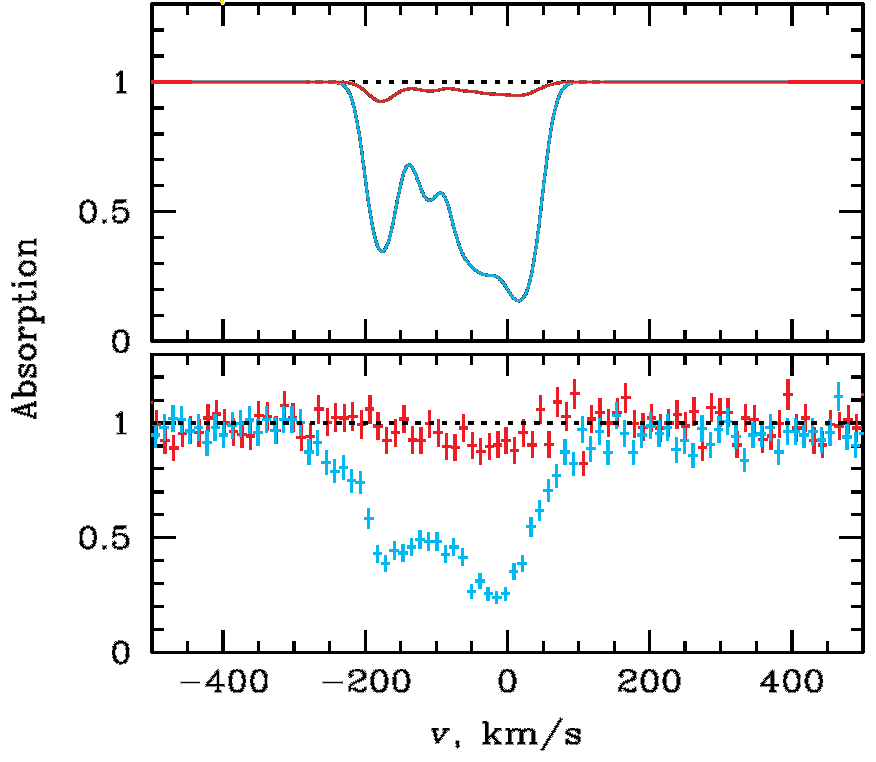
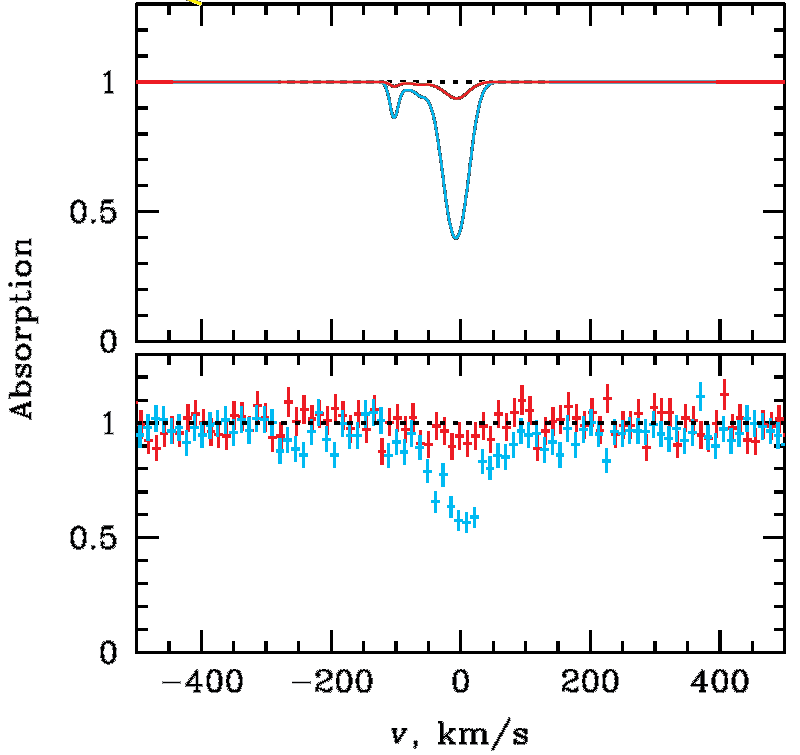
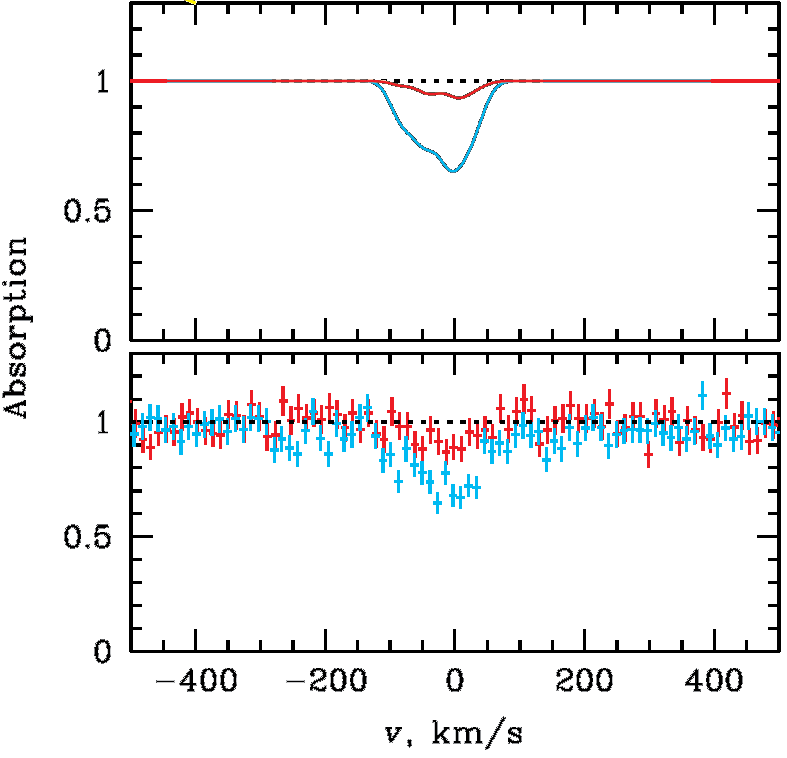
The thermodynamic state, chemical composition, and spatial structure of hot gas in galactic halos bears and indelible record of assembly history and feedback.
Lynx will probe the hot CGM to beyond 0.5r200 in galaxies with Mtot as low a 1-3 1012 solar masses through both direct imaging in emission and grating spectroscopy showing absorption against bright background AGN.
Lynx simulations above show 500 ks images and 300 ks spectra revealing detailed halo density, temperature, metallicity, and velocity structures for a 3x1012 solar mass galaxy at redshift 0.03.
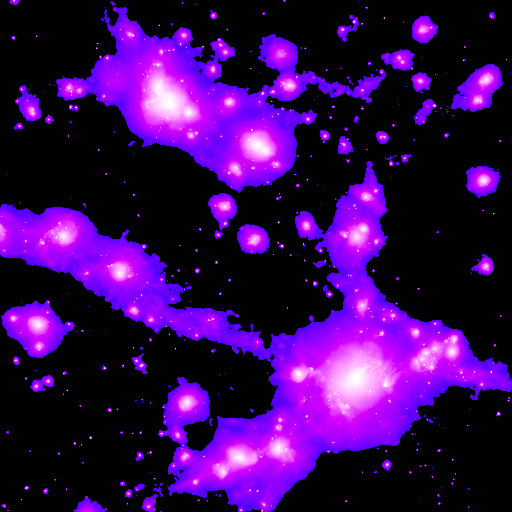
Left: A simulated 25 Mpc box clipped at the Lynx sensitivity in a 10 Msec survey of a 10 deg2 region.
The hot gas in Cosmic Web filaments retains the fossil record of strong feedback through matter ejected beyond galaxies' viral radii. Lynx will be able to map the Cosmic Web at thresholds of density greater than 30 times the mean density and temperatures above 1,500,000 K. Lynx grating observations of bright AGNs will routinely characterize the Cosmic Web via absorption by metals.
Hot phase of galactic winds driven by supernovae and stellar feedback carries the bulk of energy and momentum. The Lynx microcalorimeter, with 0.3-eV-resolution subarray, will provide a unique capability to image and spectrally resolve the structure of these winds.
Measurements of the metallicities outside of cores of massive clusters to redshift of 3, also unique to Lynx, will provide a handle on galaxy wind feedback at the peak of cosmic star formation.
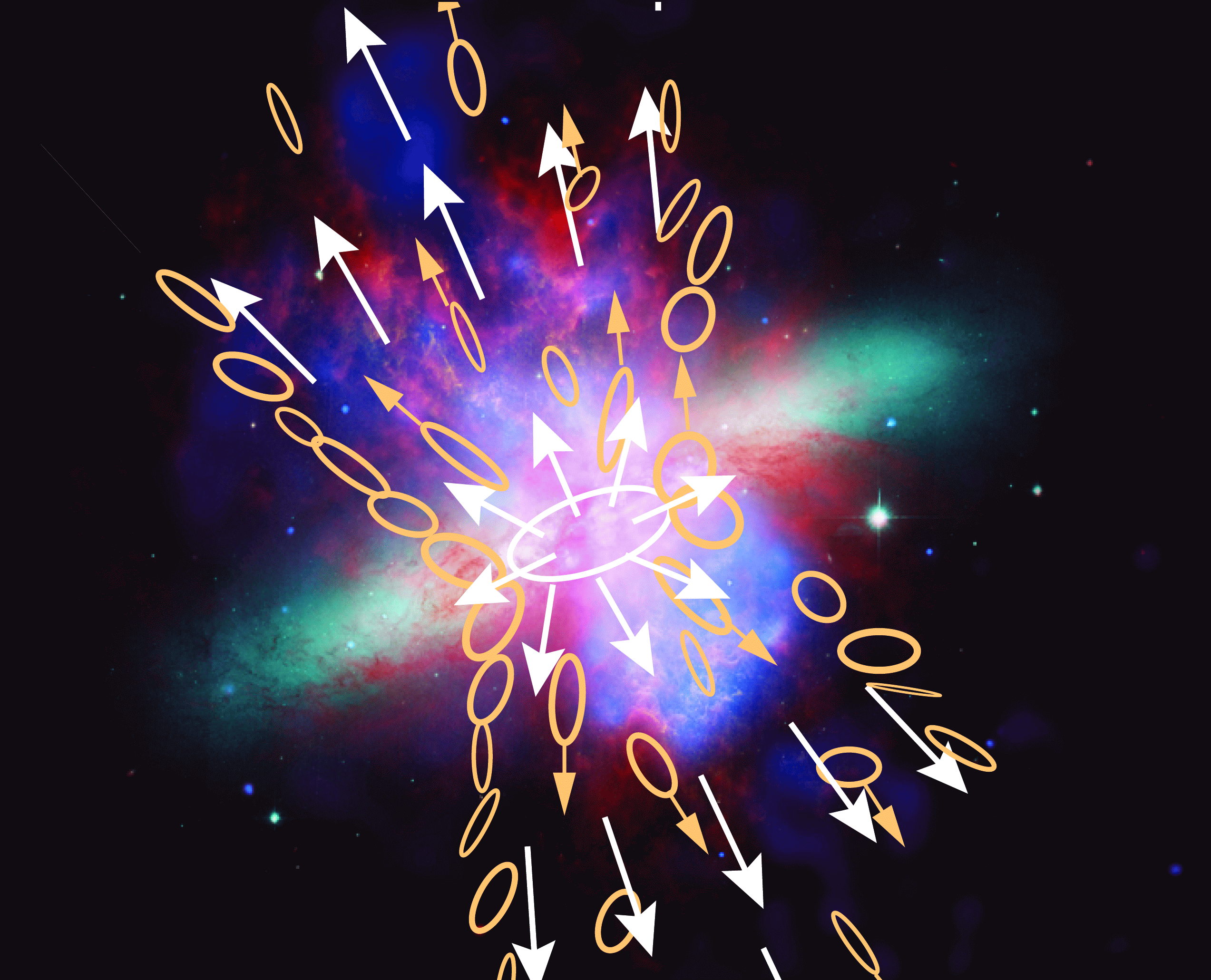
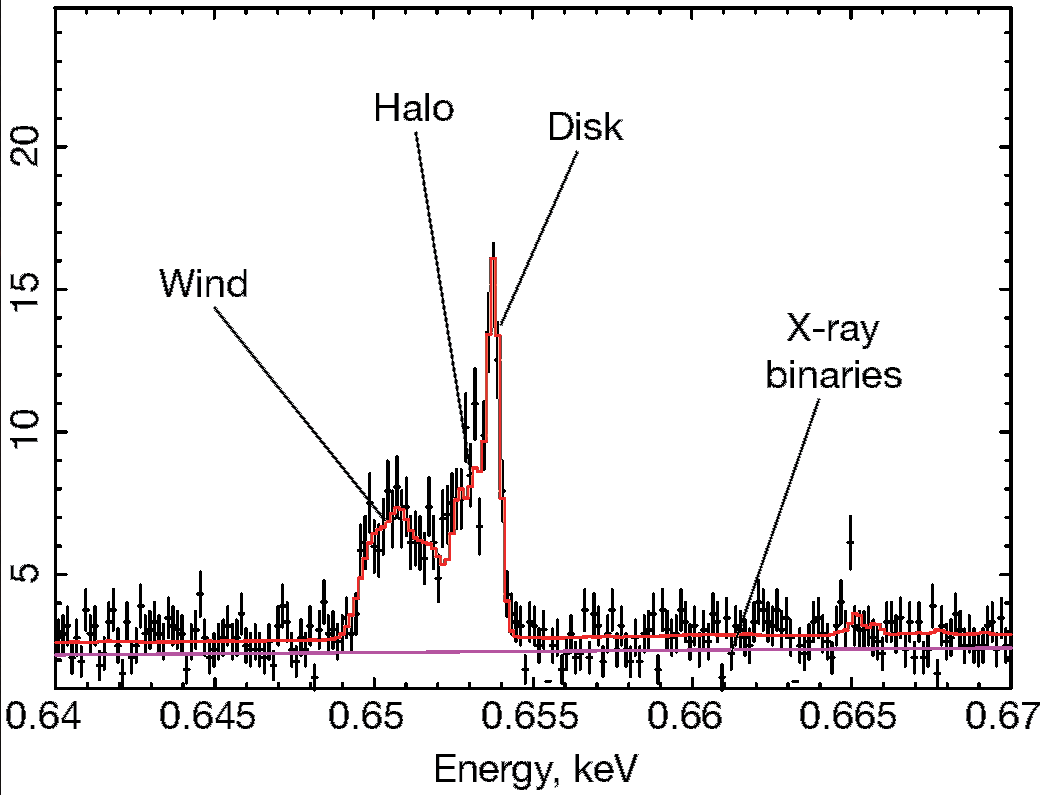
Left: Composite Chandra (blue), Hubble (gren) and Spitzer (red) image of the edge-on starburst M82. The arrows indicate schematically the direction of outflowing plasma; white for hot phase of the wind and orange for colder entrained clumps.
Right: Lynx simulated spectrum of the wind resolving the major galactic components.
Lynx will resolve extended, narrow emission line regions and AGN-inflated bubbles to determine black hole feedback energetics on galactic scales.
Lynx measurements of gas density and temperature around the AGN sphere of influence in nearby galaxies will constrain feedback fueling scenarios. Current uncertainties of AGN wind energetics are one to two orders of magnitude and dominated by the unknown density structure. Lynx high-resolution low energy X-ray spectra will provide critically-needed density diagnositics.
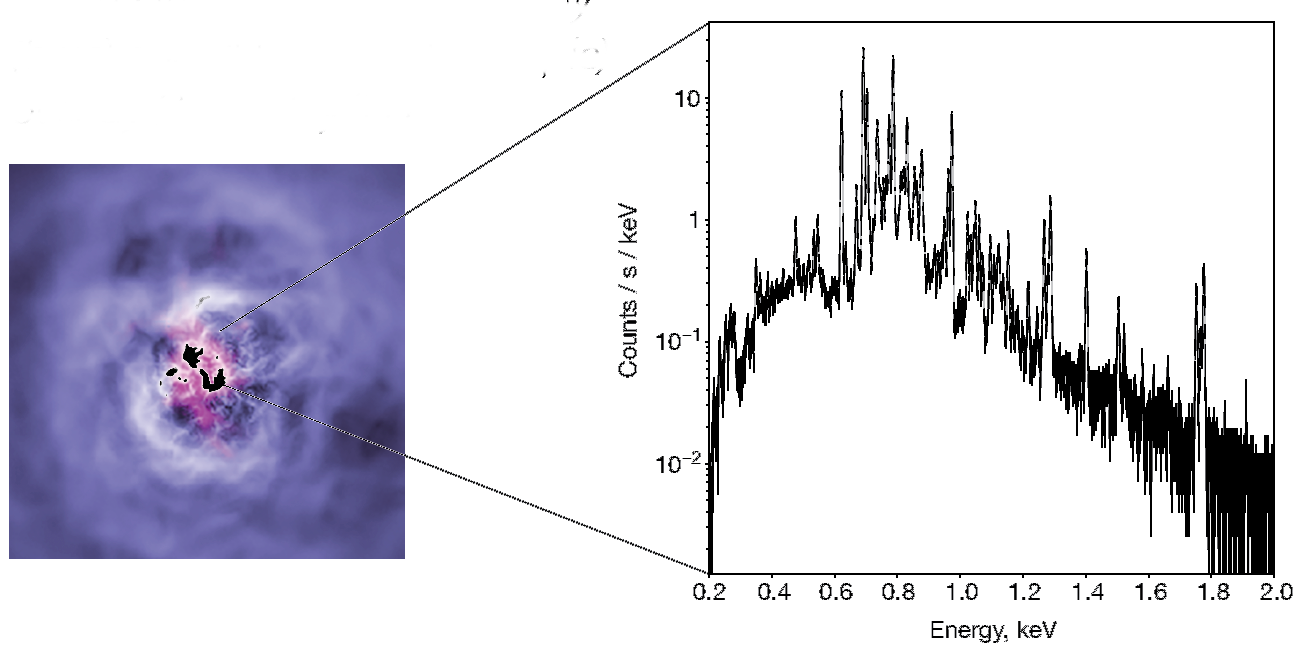
Left: Galaxy cluster A2597 Chandra (blue) and VLT-MUSE H-alpha (purple) composite from Tremblay (2017) showing complex sructure generated by feedback. Lynx will provide similar quality data for individual galaxies within 20 Mpc.
Right: Simulated Lynx microcalorimeter spectrum for T=0.5 keV plasma in the vicinity of the central black hole.